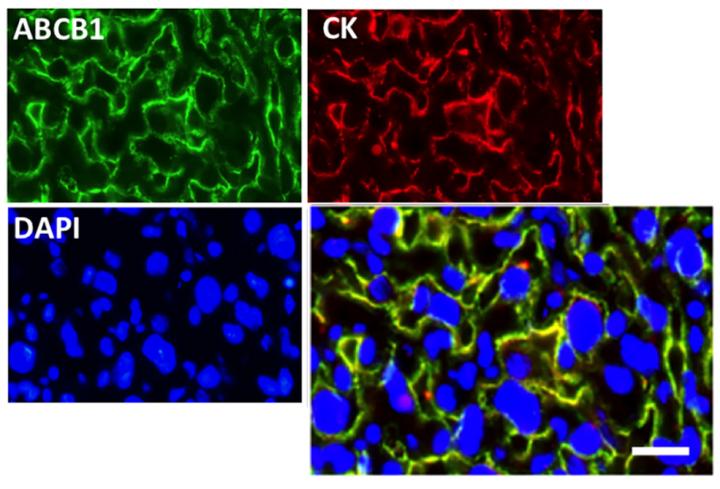Circadian clock in the mouse placenta

Immunofluorescence reveals that the ABCB1 protein (in green) localises to the labyrinth zone of the mouse placenta.
Credit: Dr. Mariana Astiz, University of Lubeck
The placenta forms the interface between the maternal and foetal circulatory systems. As well as ensuring essential nutrients, endocrine and immunological signals get through to the foetus to support its development and growth, the placenta must also protect it from the accumulation of potentially toxic compounds.
A study from Cécile Demarez, Mariana Astiz and colleagues at the University of Lübeck in Germany now reveals that the activity of a crucial placental gatekeeper in mice is regulated by the circadian clock, changing during the day-night cycle. The study, which has implications for the timing of maternal drug regimens, is published in the journal Development.
The circadian clock translates time-of-day information into physiological signals through rhythmic regulation of downstream genes. In this study, the researchers discover that in the labyrinth zone of the mouse placenta, a tissue functionally equivalent to the human chorionic villi, clock genes are expressed in a 24h rhythm. Importantly, they show that this placental clock is responsible for regulating the expression and activity of ABCB1, a drug efflux transporter with hundreds of known substrates.
An important prediction of this work is that the time-of-day of maternal treatment could be an important factor to consider to avoid non-desirable effects for the foetus during pregnancy.
“Pharmacological treatments are mostly avoided by pregnant women but in certain circumstances there is no other option,” says Dr. Mariana Astiz. “An example would be maternal treatment with antiretrovirals (many of which are in fact substrates of ABCB1). So, choosing the correct time of day to take drugs like these might reduce the ammount of drug reaching the baby and hence the possible negative effects in the short and long-term.”
Dr. Astiz hopes this study will provide a stimulus to design studies that specifically test hypotheses about the placental circadian clock in humans. “This is definitely a very exciting and rapidly advancing field of research.”
All latest news from the category: Life Sciences and Chemistry
Articles and reports from the Life Sciences and chemistry area deal with applied and basic research into modern biology, chemistry and human medicine.
Valuable information can be found on a range of life sciences fields including bacteriology, biochemistry, bionics, bioinformatics, biophysics, biotechnology, genetics, geobotany, human biology, marine biology, microbiology, molecular biology, cellular biology, zoology, bioinorganic chemistry, microchemistry and environmental chemistry.
Newest articles

Innovative 3D printed scaffolds offer new hope for bone healing
Researchers at the Institute for Bioengineering of Catalonia have developed novel 3D printed PLA-CaP scaffolds that promote blood vessel formation, ensuring better healing and regeneration of bone tissue. Bone is…

The surprising role of gut infection in Alzheimer’s disease
ASU- and Banner Alzheimer’s Institute-led study implicates link between a common virus and the disease, which travels from the gut to the brain and may be a target for antiviral…

Molecular gardening: New enzymes discovered for protein modification pruning
How deubiquitinases USP53 and USP54 cleave long polyubiquitin chains and how the former is linked to liver disease in children. Deubiquitinases (DUBs) are enzymes used by cells to trim protein…



